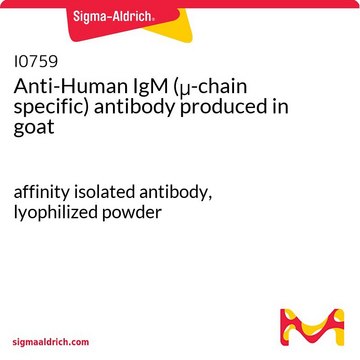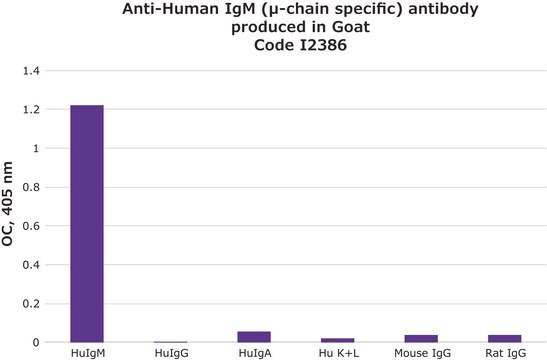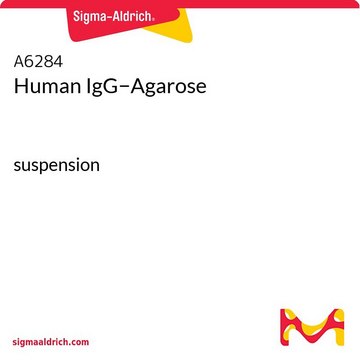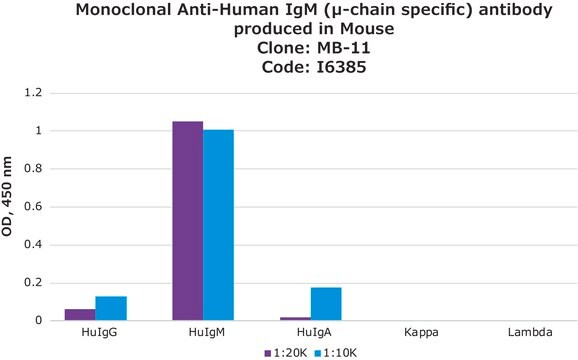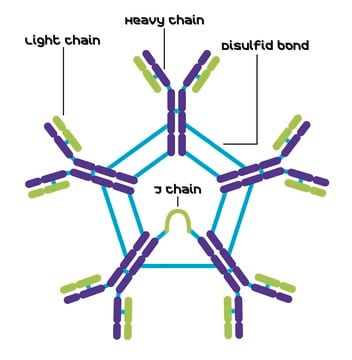A9935
Anti-Human IgM (μ-chain specific)−Agarose antibody produced in goat
affinity isolated antibody, PBS suspension
Sinônimo(s):
Anti Human IgM Antibody - Anti-Human IgM (μ-chain specific)-Agarose antibody produced in goat, Anti Human Igm Antibody
About This Item
Produtos recomendados
fonte biológica
goat
conjugado
agarose conjugate
forma do anticorpo
affinity isolated antibody
tipo de produto de anticorpo
secondary antibodies
clone
polyclonal
Formulário
PBS suspension
técnica(s)
Ouchterlony double diffusion: suitable
immunoelectrophoresis: suitable
capacidade
2-3 mg/mL, resin binding capacity (human IgM)
temperatura de armazenamento
2-8°C
modificação pós-traducional do alvo
unmodified
Descrição geral
Cyanogen bromide activated cross-linked beaded agarose is frequently conjugated to proteins such as immunoglobulins to facilitate their use in physicochemical processes such as precipitation, absorption and clarification.
Aplicação
Ações bioquímicas/fisiológicas
Outras notas
forma física
Exoneração de responsabilidade
Não está encontrando o produto certo?
Experimente o nosso Ferramenta de seleção de produtos.
Código de classe de armazenamento
12 - Non Combustible Liquids
Classe de risco de água (WGK)
nwg
Ponto de fulgor (°F)
Not applicable
Ponto de fulgor (°C)
Not applicable
Escolha uma das versões mais recentes:
Certificados de análise (COA)
Não está vendo a versão correta?
Se precisar de uma versão específica, você pode procurar um certificado específico pelo número do lote ou da remessa.
Já possui este produto?
Encontre a documentação dos produtos que você adquiriu recentemente na biblioteca de documentos.
Os clientes também visualizaram
Nossa equipe de cientistas tem experiência em todas as áreas de pesquisa, incluindo Life Sciences, ciência de materiais, síntese química, cromatografia, química analítica e muitas outras.
Entre em contato com a assistência técnica